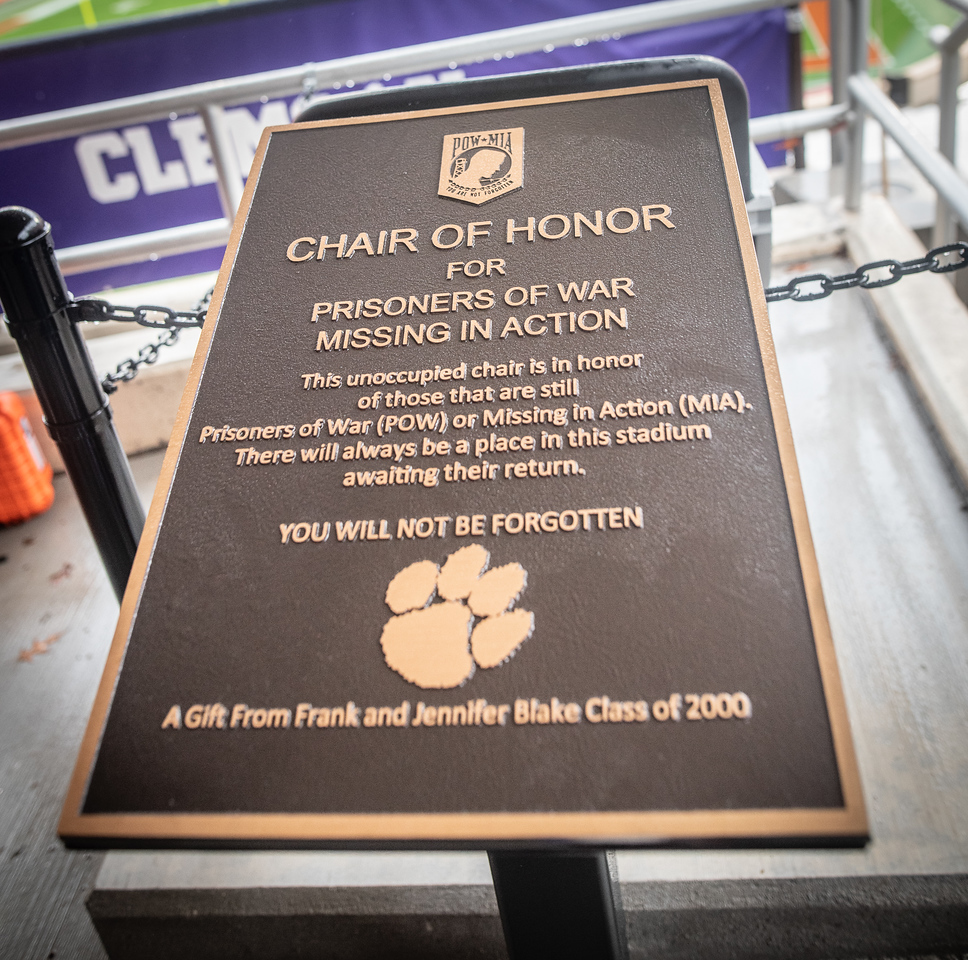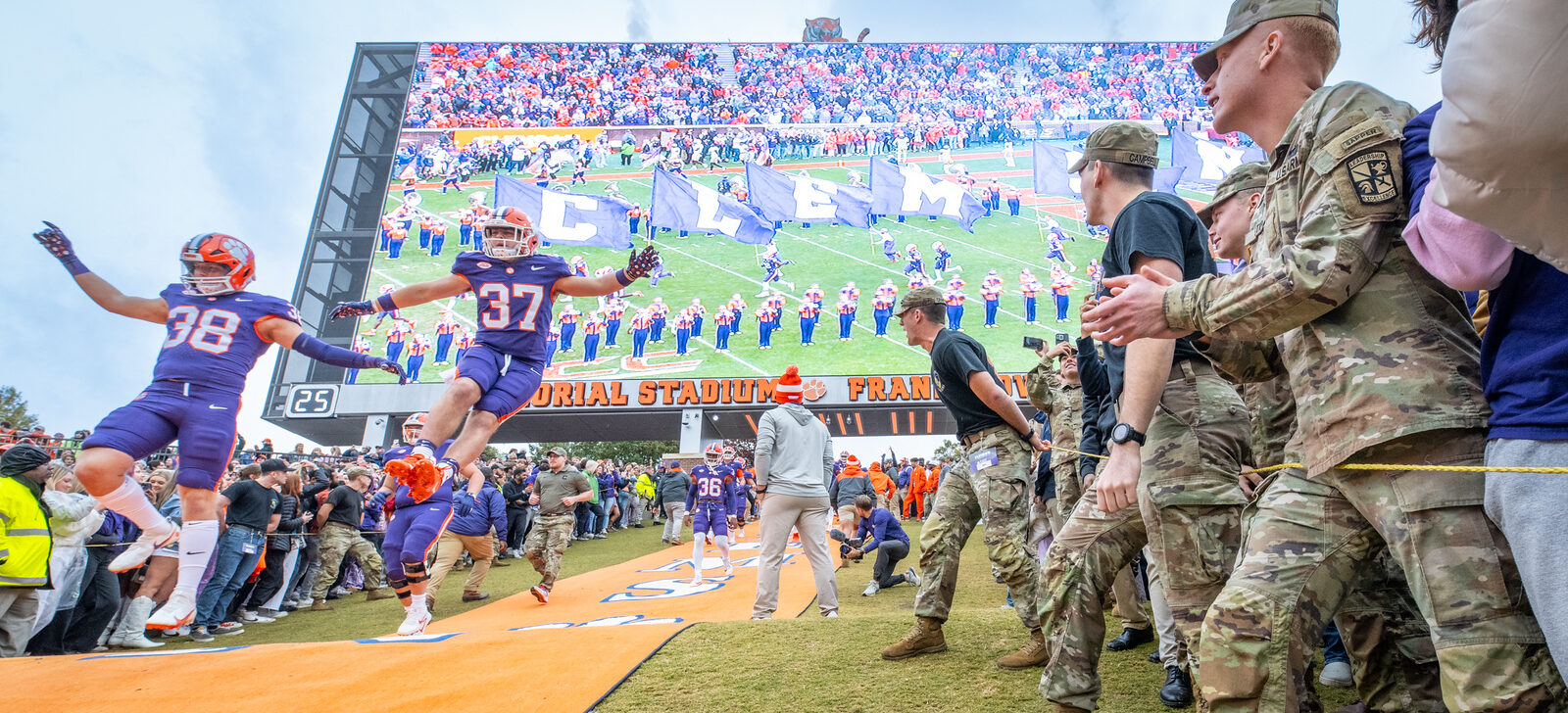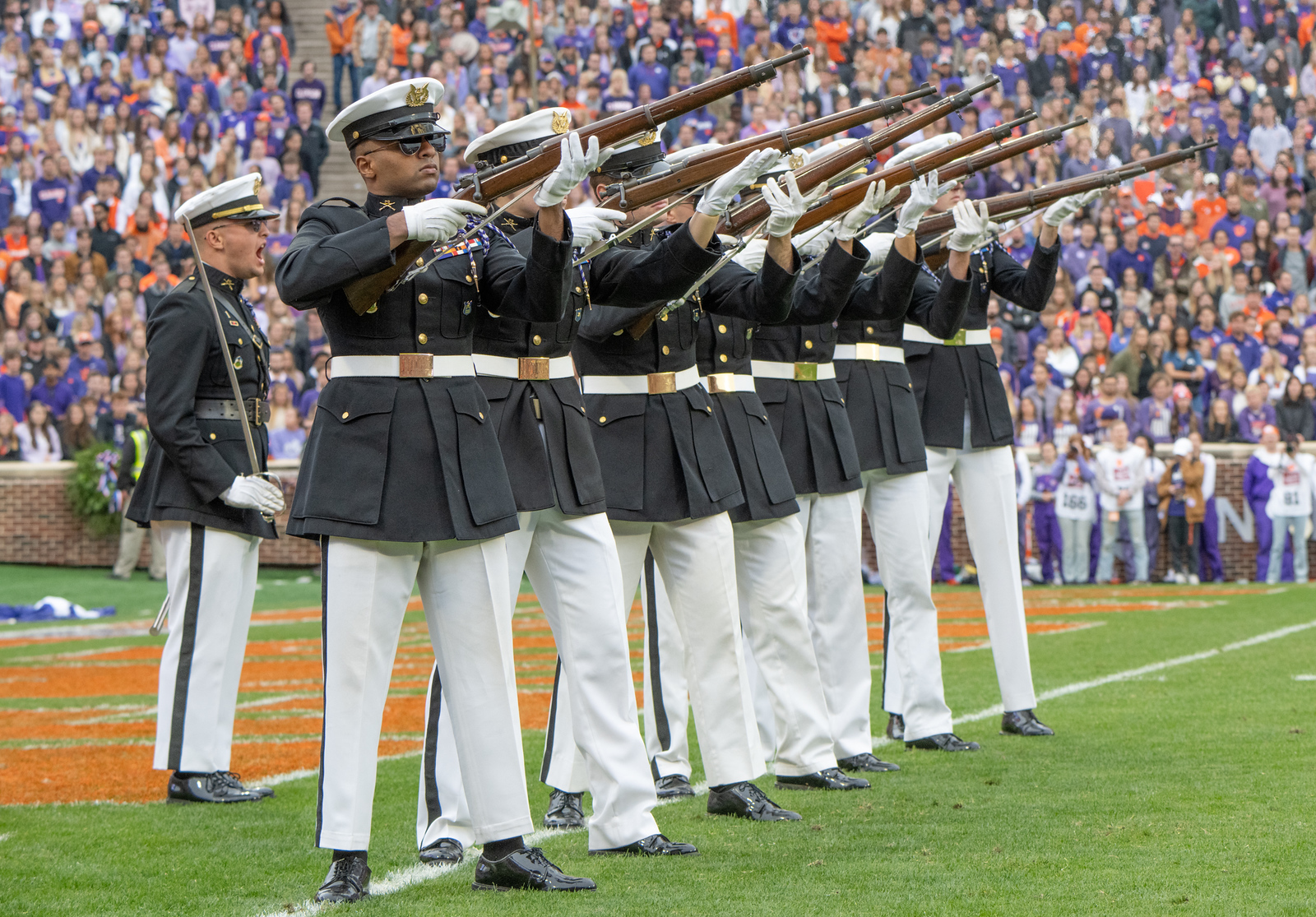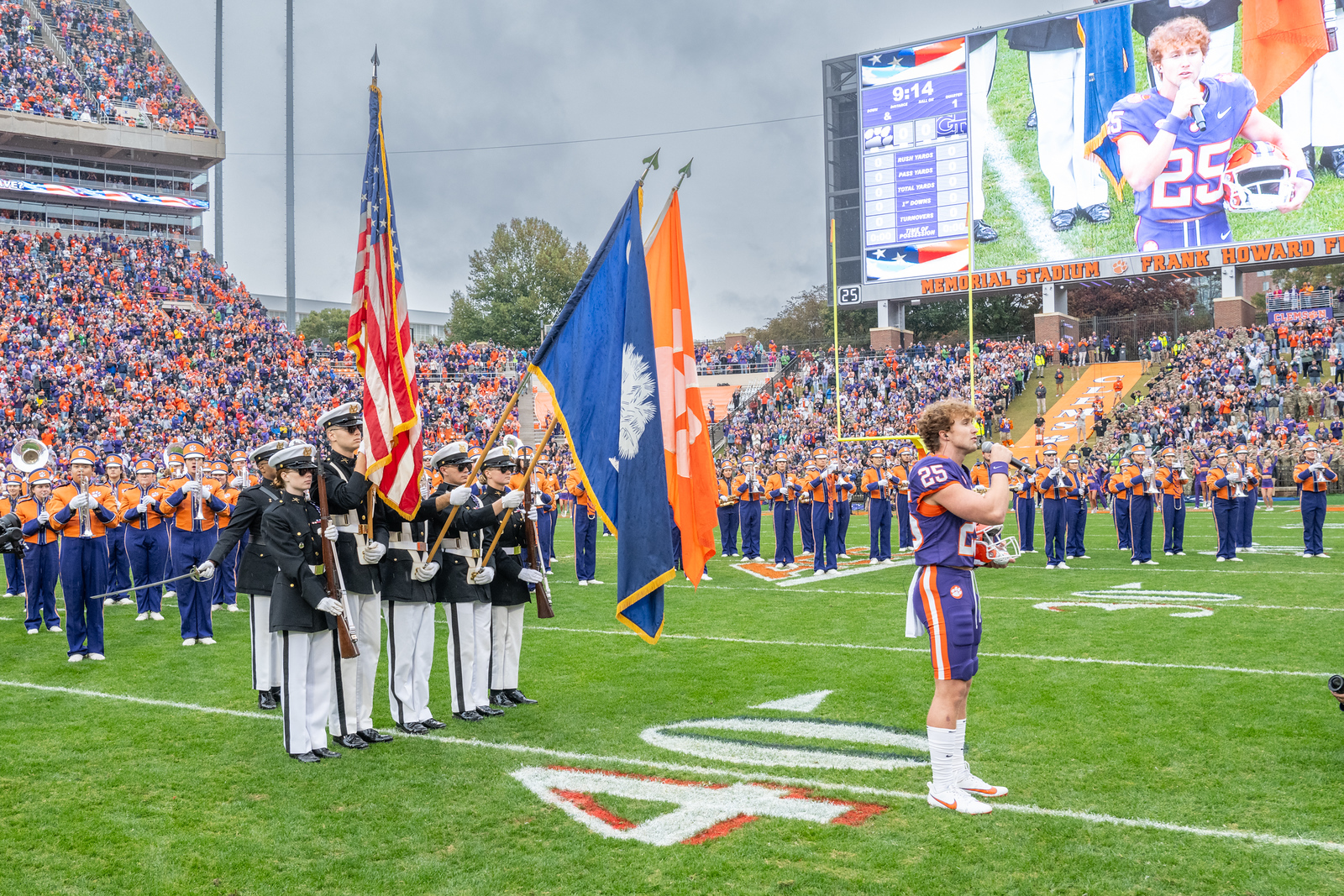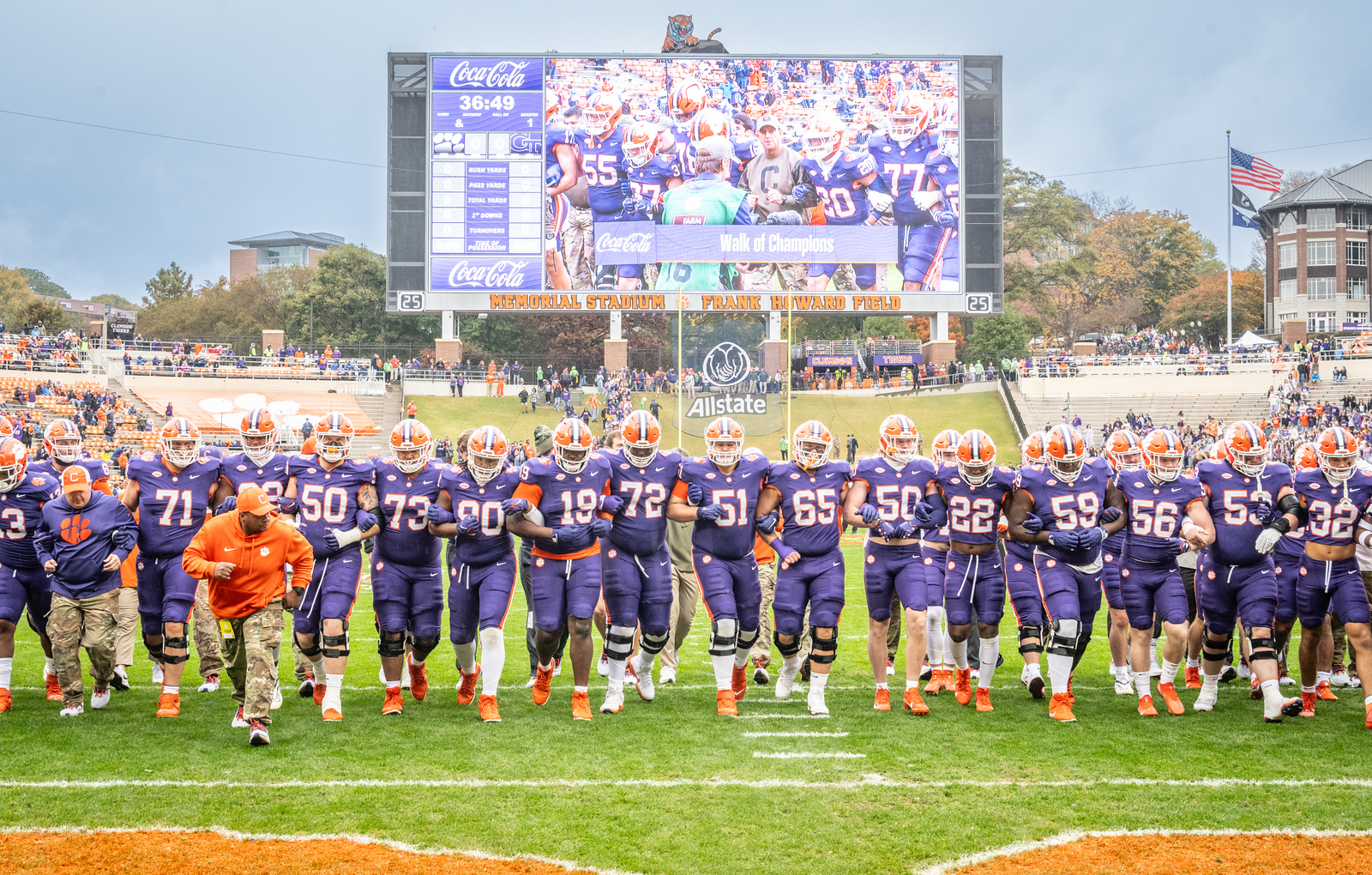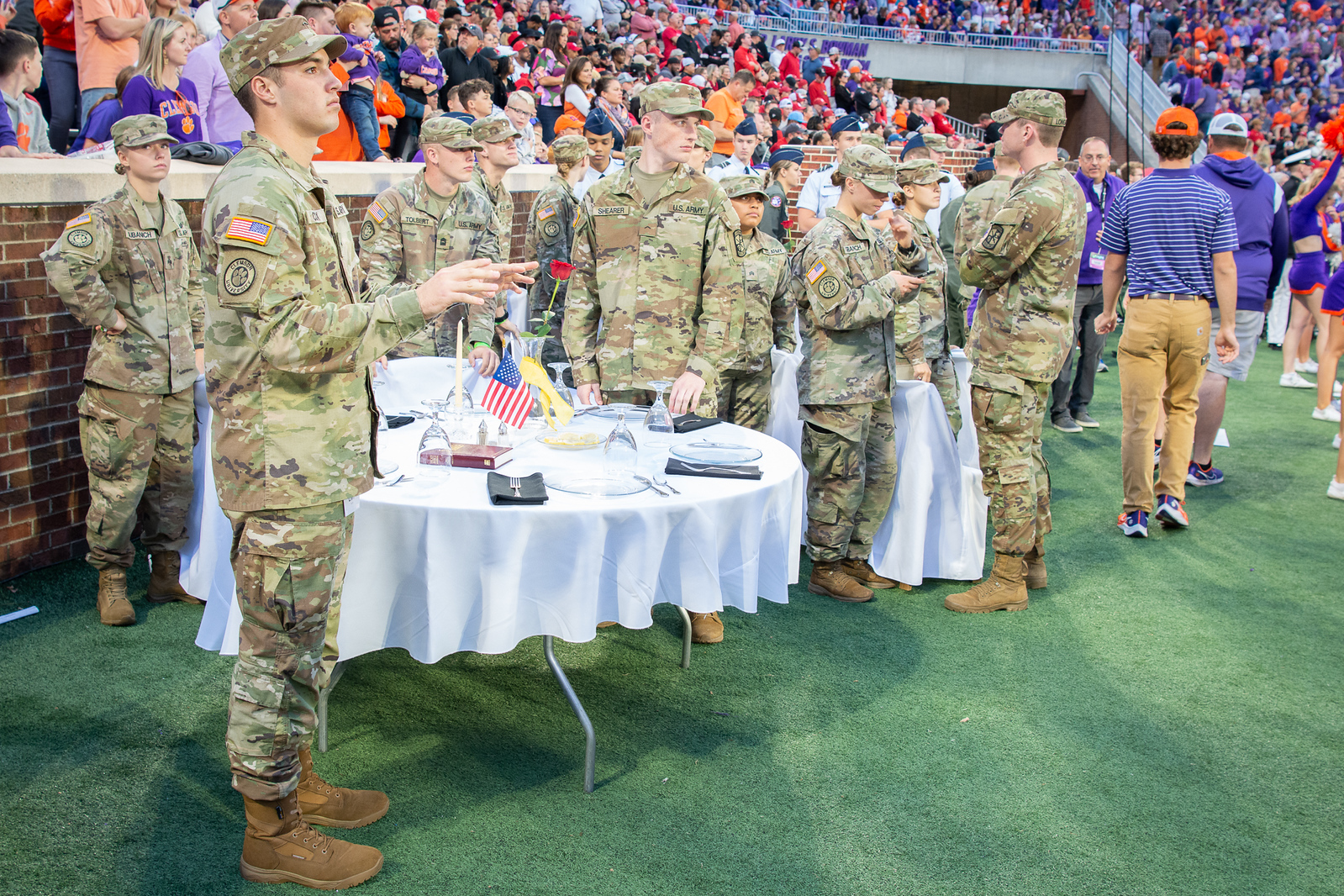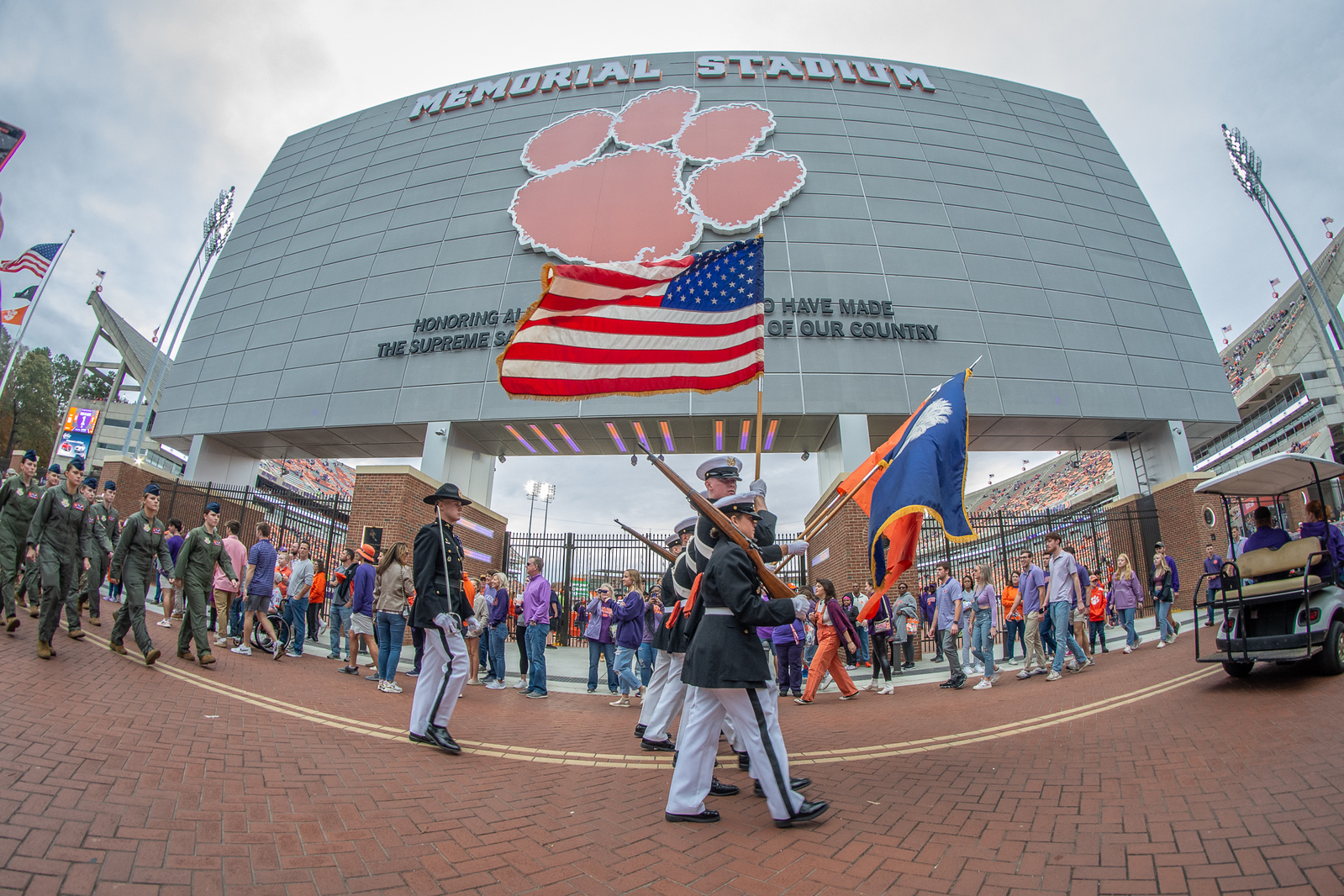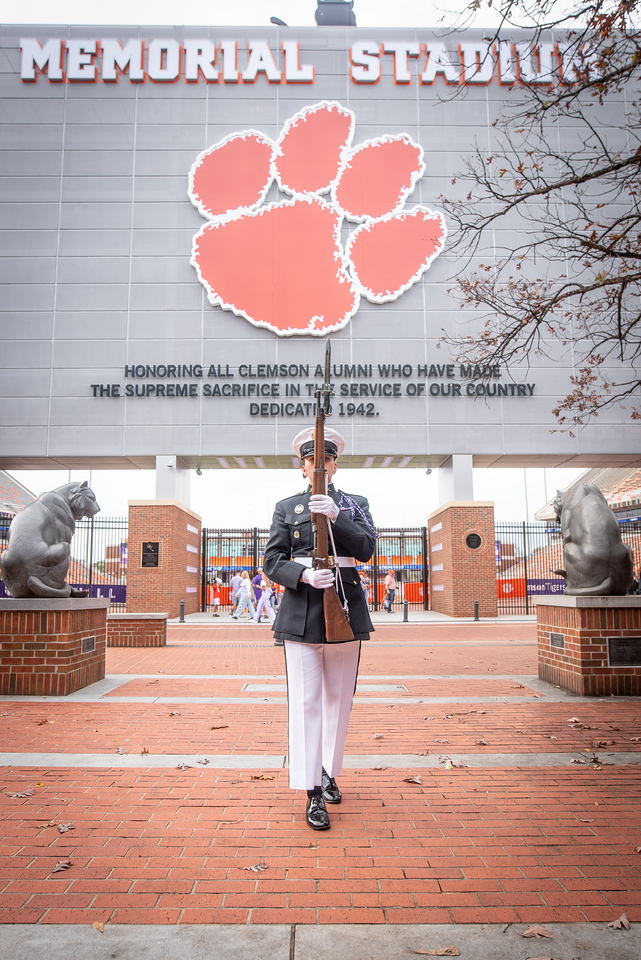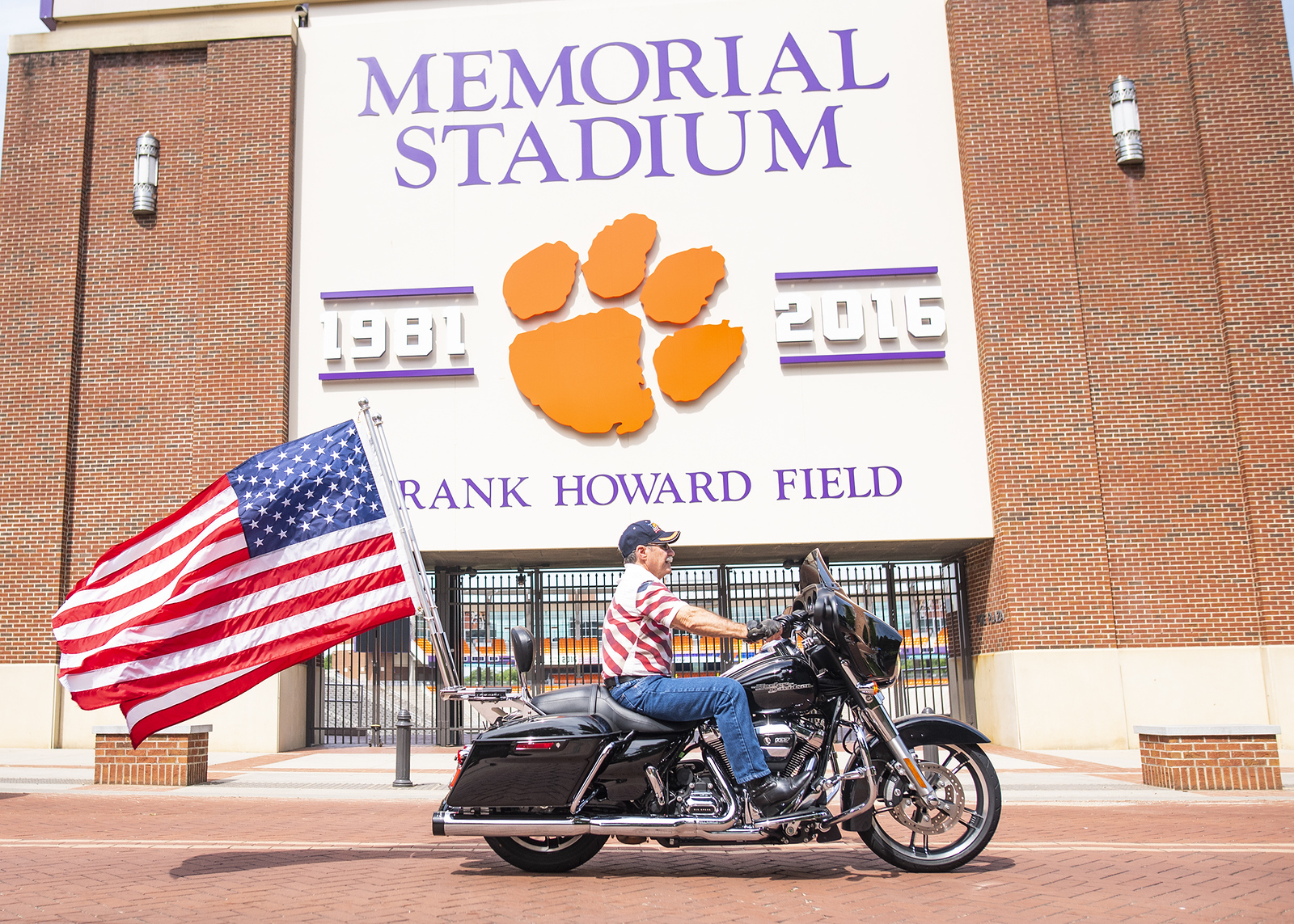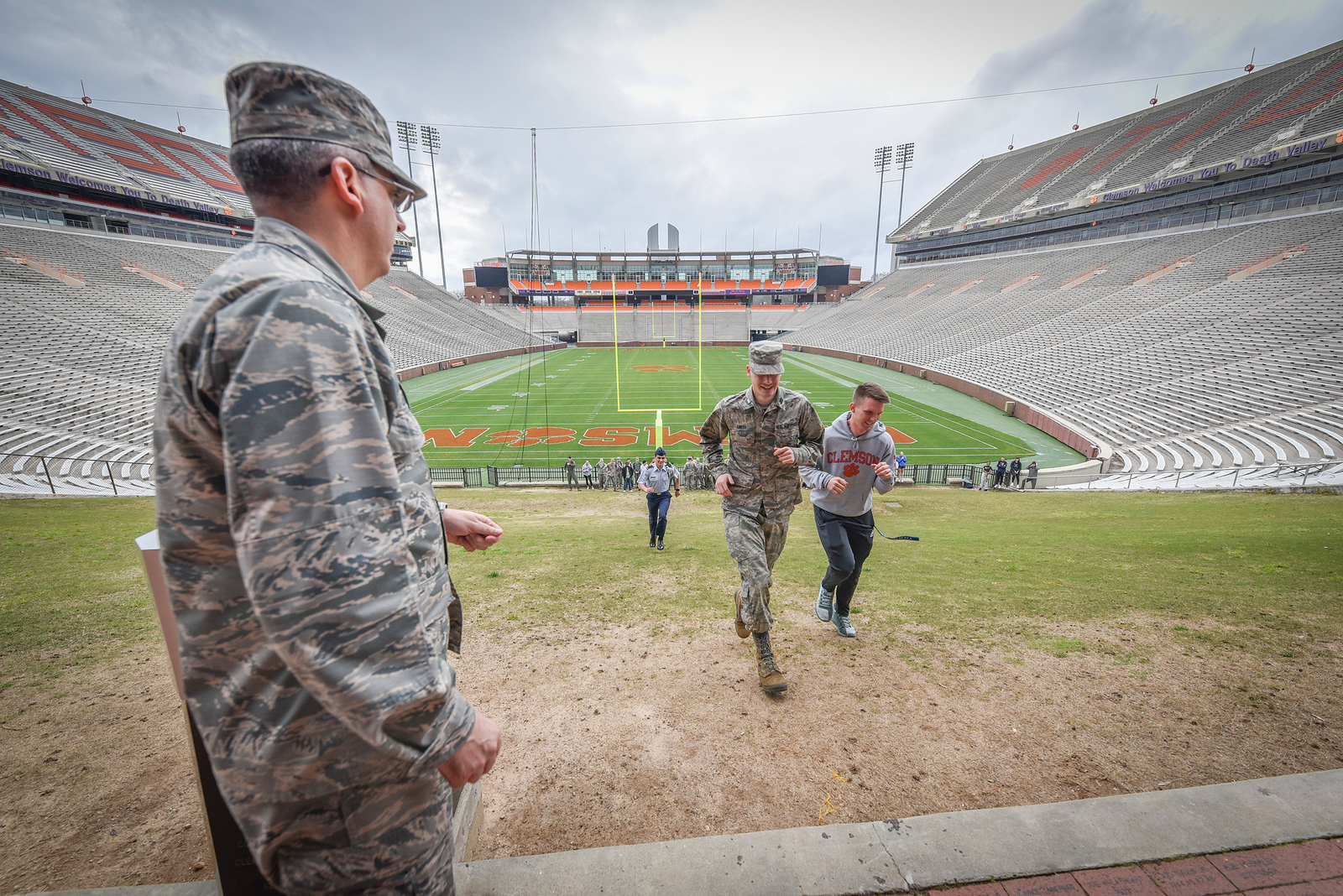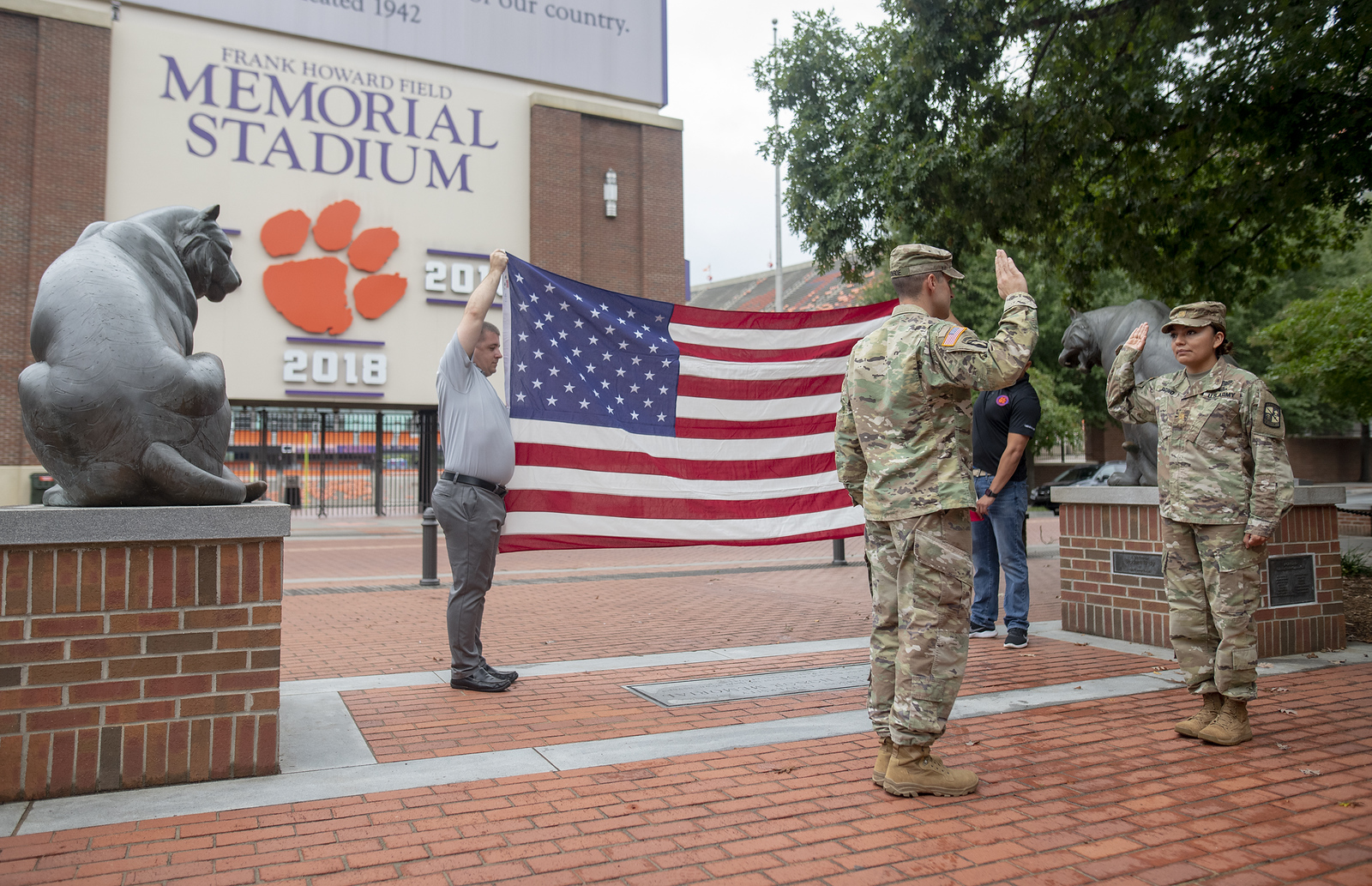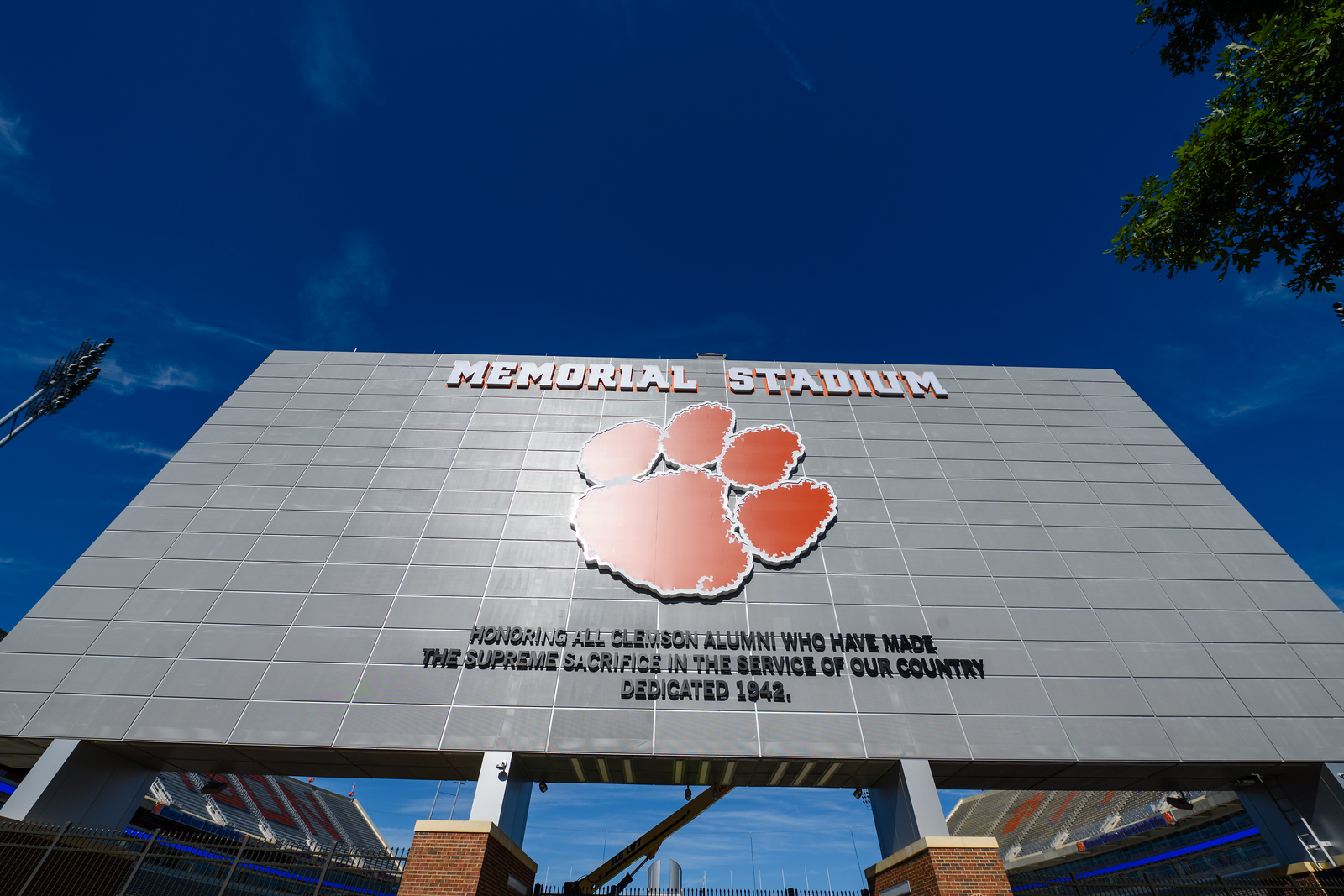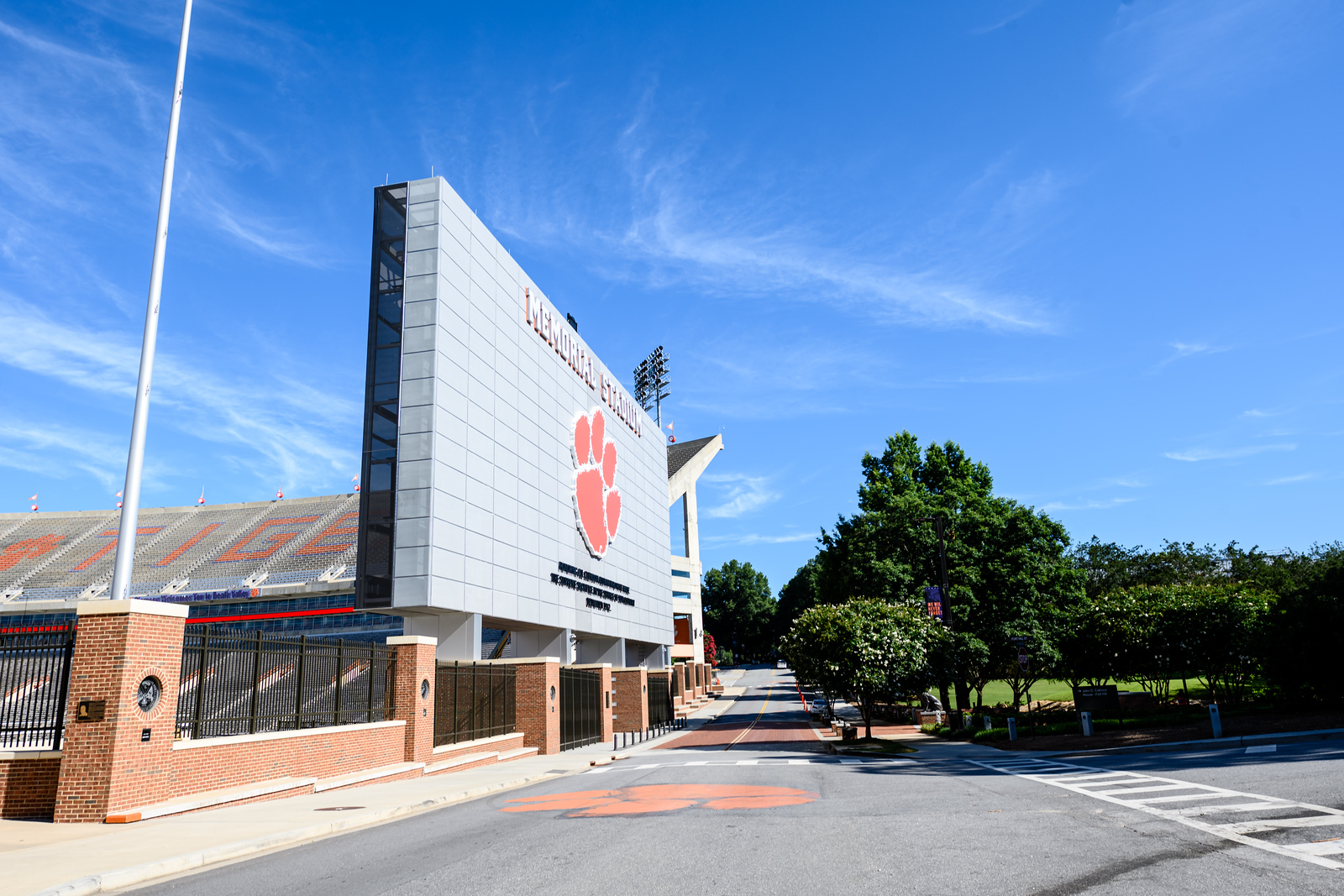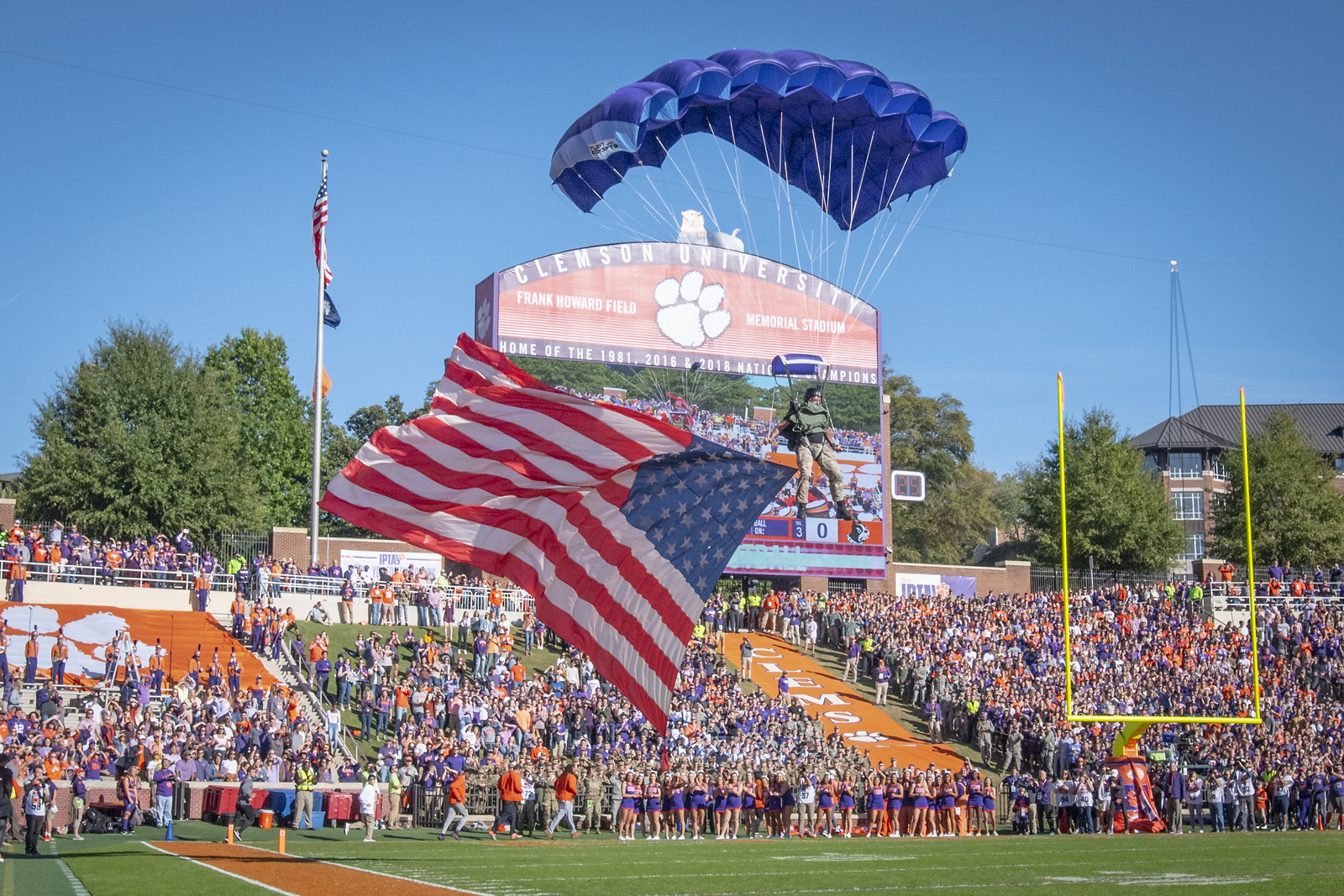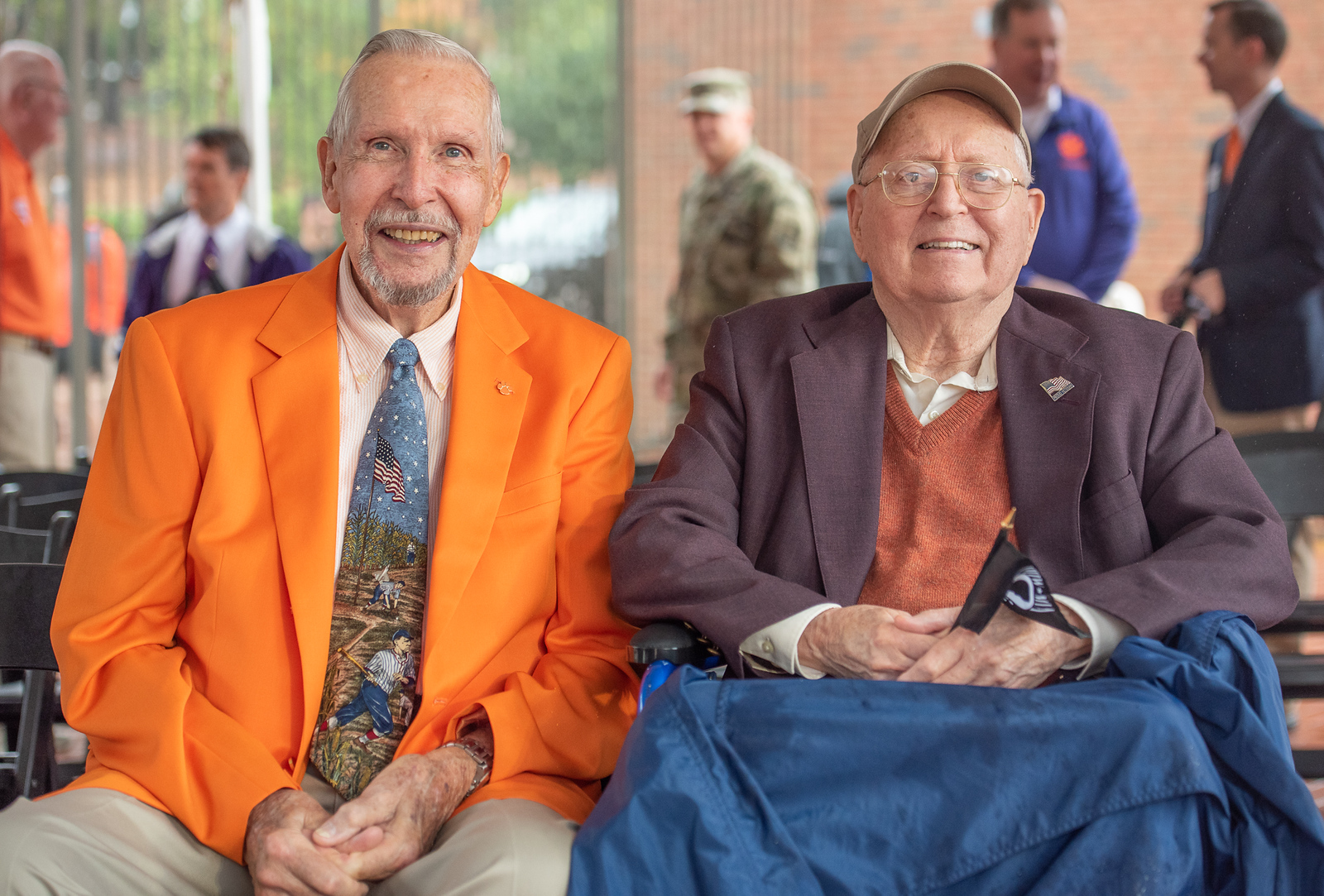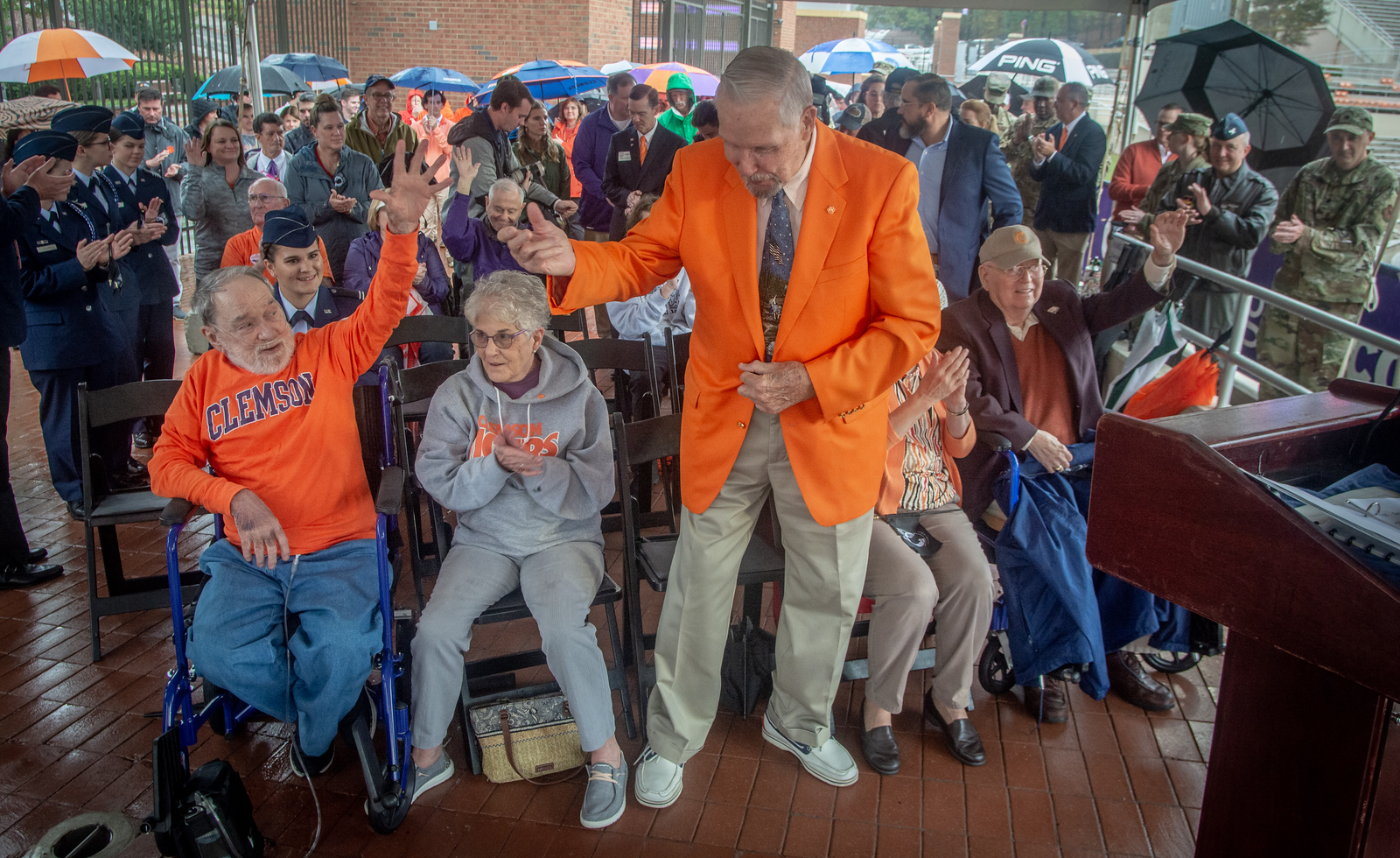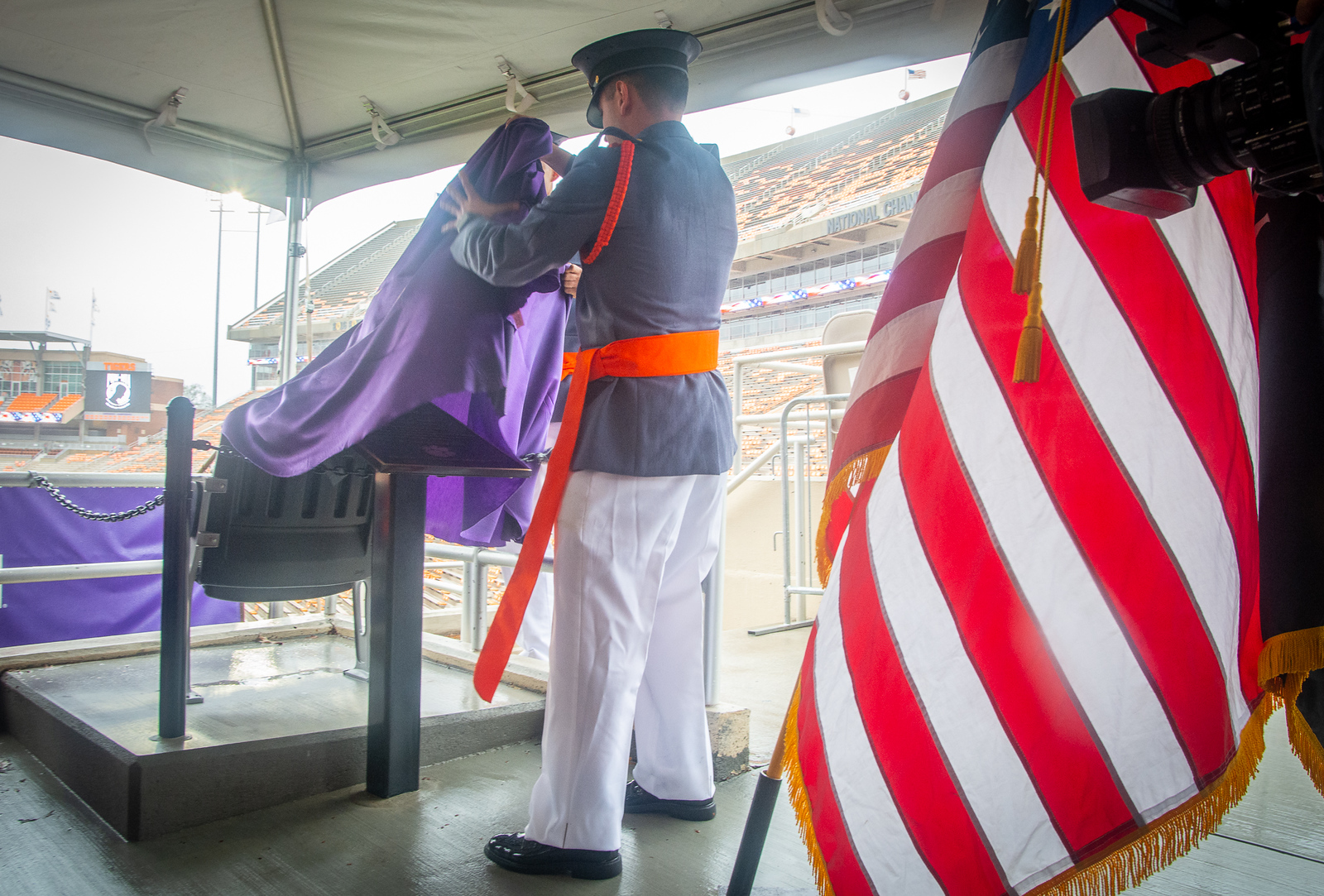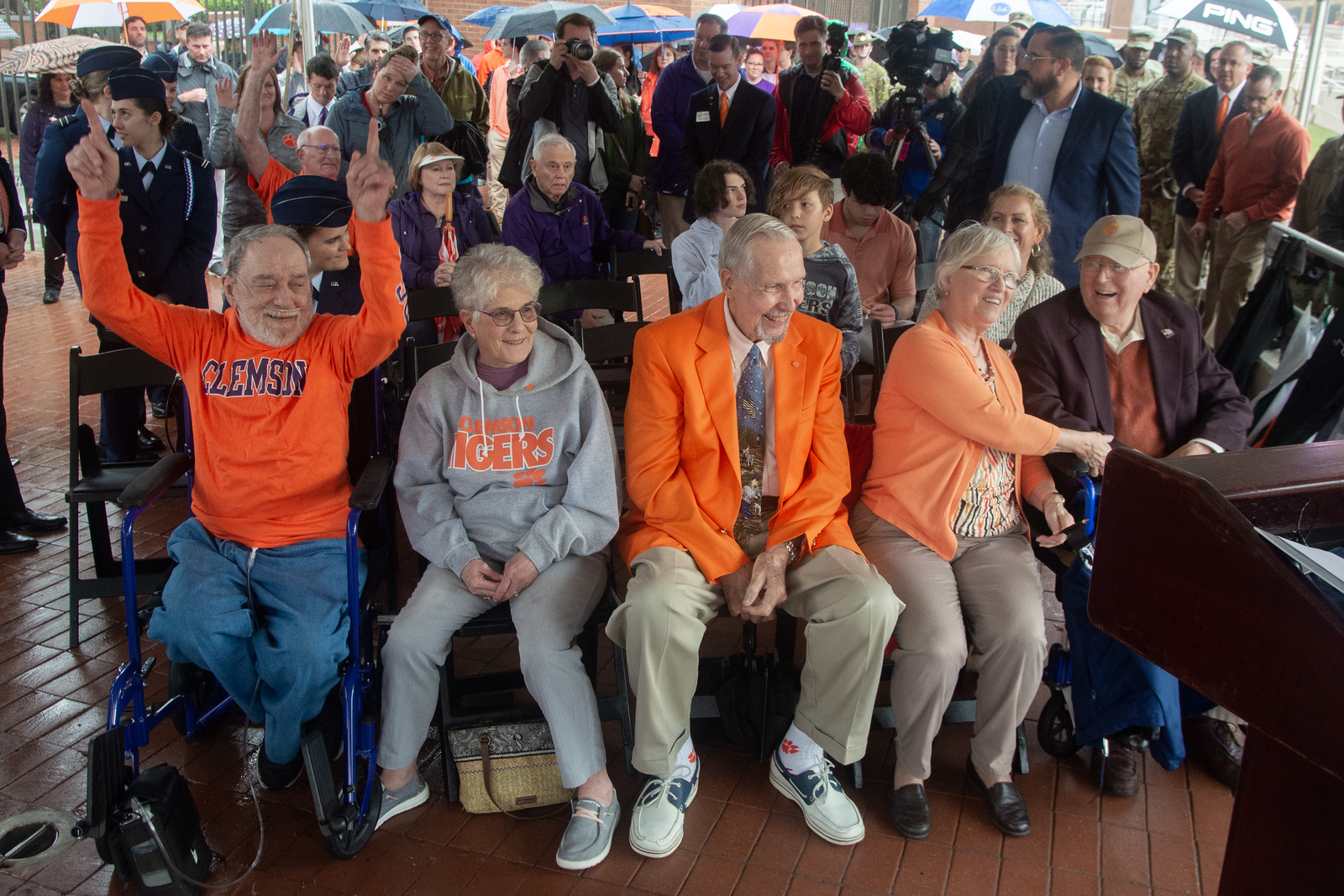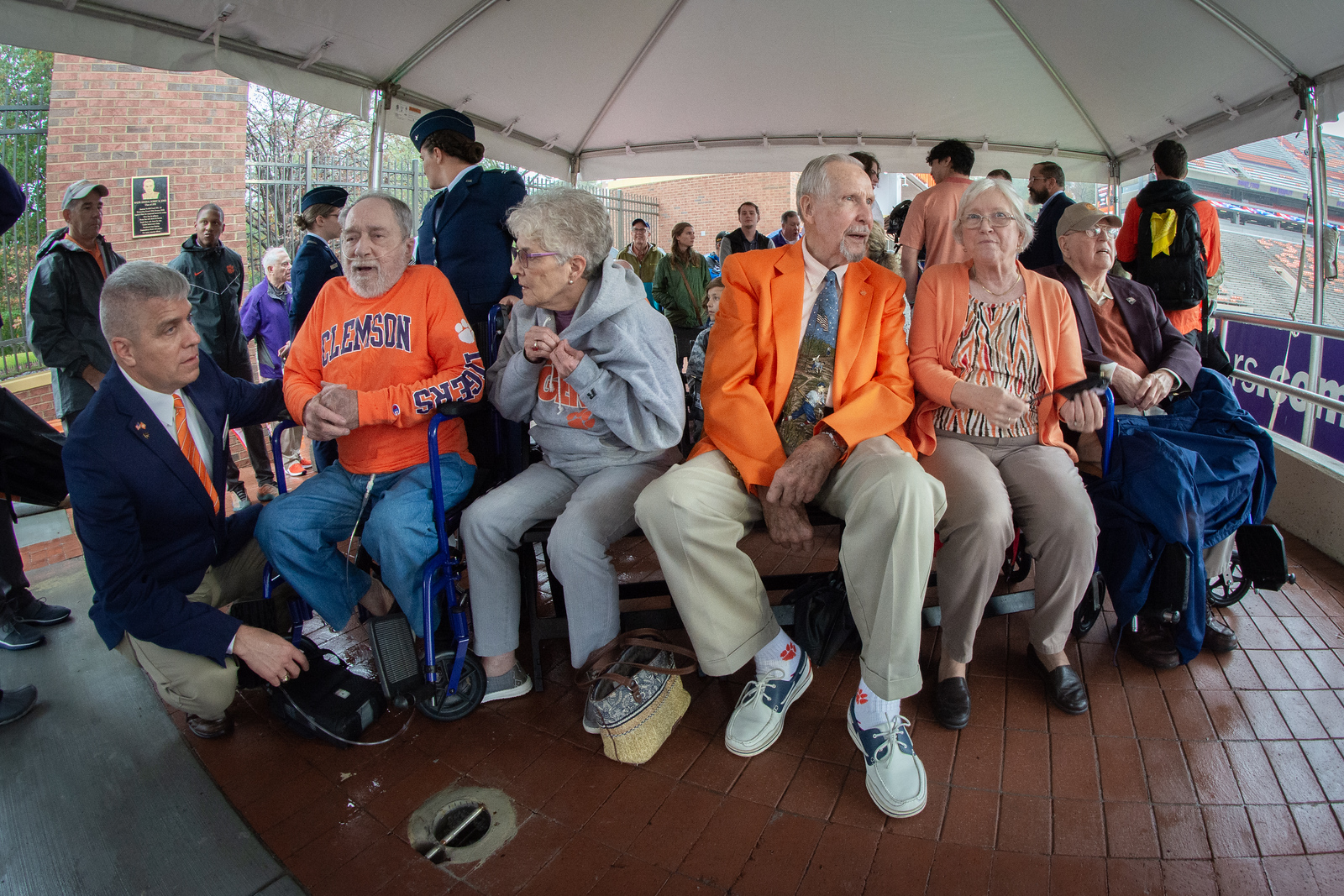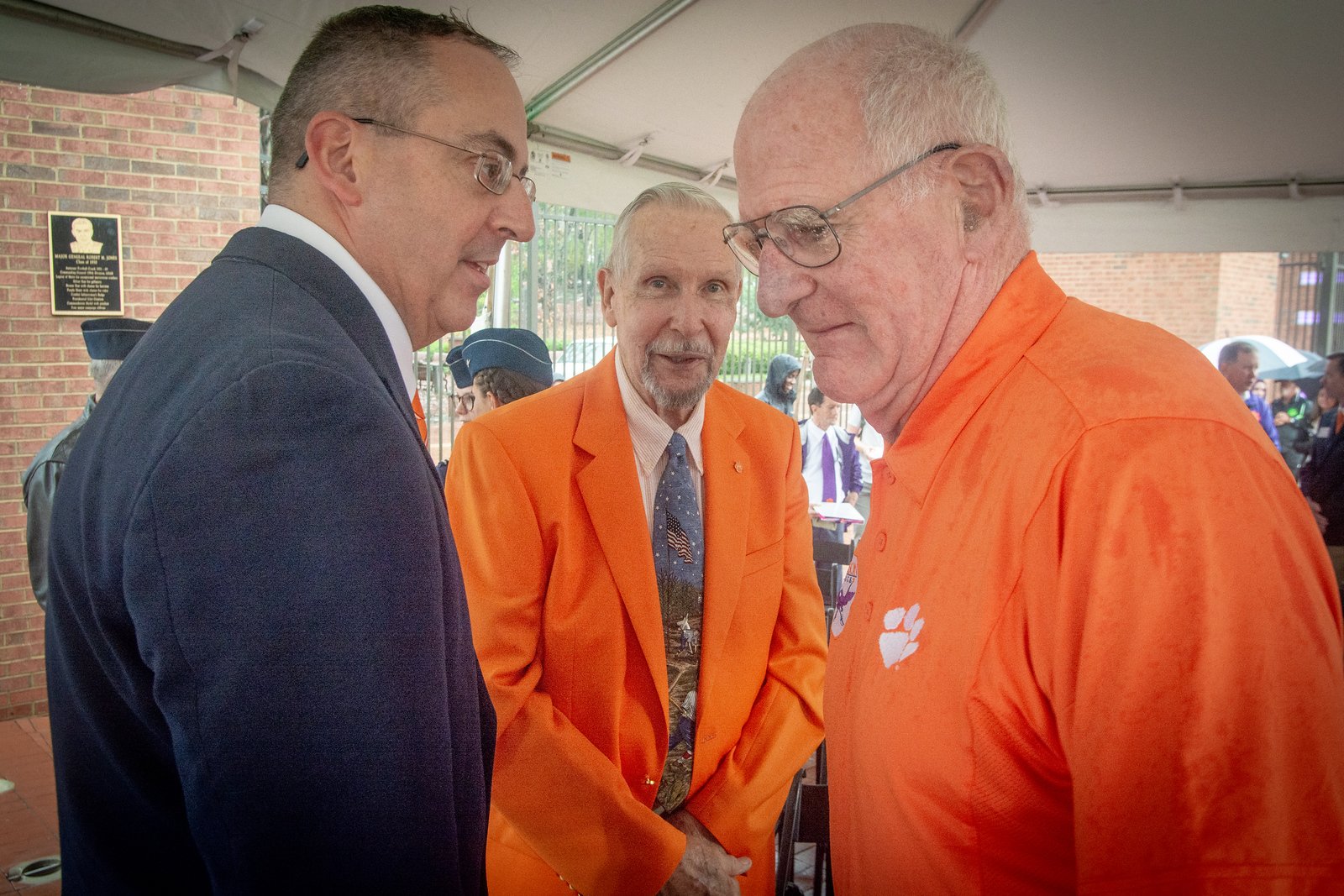History and Namesake
Also known as “Death Valley,” Memorial Stadium bears great significance to Clemson and its military heritage. It is named Memorial Stadium in honor and remembrance of all Clemson alumni and former Clemson students who paid the ultimate sacrifice in defense of our nation. These Clemson men are forever commemorated on the Scroll of Honor, which is directly in front of the stadium gates. The history of Memorial Stadium is tied to Clemson’s involvement in World War II and the Clemson men who fought in that war.
On September 1, 1939, Germany invaded Poland and commenced WWII. Almost 2 years later, in the summer of 1941, construction began on a new Clemson football stadium with initial plans to seat 20,000 people. Clemson head coach Frank Howard tasked his players with surveying the area, and engineering students were in charge of the stadium design. They’d settled on a natural valley west of Historic Riggs Field. While the Tigers were designing their new home, the war in Europe was worsening. That very summer, the Germans invaded the Soviet Union with 4.5 million soldiers. By the fall of 1941, the United States’ entry into WWII seemed all but inevitable. Charles Wright, a center and junior at Clemson in 1941, wrote “In the back of our minds, we always knew we would have to go (to war) at one time or another. But that didn’t change our attitude about getting an education and doing the things we needed to do to get ready for it.” Wright would go on to fight in Germany in 1945, where he sustained a shrapnel wound.
The Tigers opened the gates to their new home at Memorial Stadium for the first time on September 19, 1942. Their first game in Memorial Stadium was against Presbyterian College, where they defeated them 32-13. The Tigers’ victory was an enjoyable distraction from the looming war to come. Presbyterian College’s head coach Lonnie McMillan would call Memorial Stadium “Death Valley” because the Tigers would continuously beat Presbyterian College there; the name stuck.
On December 7, 1941, the America entered WWII after the Pearl Harbor attacks. At that time, more than 6,500 Clemson men were in serving in the military. 90 percent of these men were commissioned officers from Clemson’s ROTC program.
Although the media and Clemson have called our football stadium “Clemson Memorial Stadium” from almost the beginning, this is wrong and goes against the intent and wishes of Clemson’s administration. This was stated by David Watson, chairman of the buildings and grounds committee, in his letter to Clemson College President R.F. Poole:
“Clemson Memorial Stadium would imply that this stadium was built in honor of Mr. Clemson or some other person by the name of Clemson. A resolution unanimously adopted recommended the name Memorial Stadium. It was suggested that a bronze tablet be put up bearing this name and carrying an inscription to the effect that the stadium is dedicated to all Clemson men who have made the supreme sacrifice in the service of their country.”
Over the decades, Memorial Stadium would receive renovations to accommodate more seats. In 1958, 18,000 seats were added. In 1960, 5,658 seats were built in the west end zone, increasing the stadium capacity to 53,000. In 1978, Clemson added an upper deck on the south side. In 1983, an upper deck was added on the north side, increasing the current capacity to more than 80,000.
No matter the renovations and physical changes, Memorial Stadium will always pay respect and honor to the Clemson alumni and former Clemson students who paid the ultimate sacrifice. Memorial Stadium continues to serve as a physical reminder of Clemson’s military heritage and legacy of excellence.
Detailed TImeline
Early 1942: Death Valley completed with 20,000 seats
Sept. 19, 1942: Memorial Stadium opened with a win against Presbyterian College, 32-13
1958: 18,000 sideline seats added
1960: 5,658 West Endzone seats added
1974: Playing surface named and dedicated after Frank Howard
1978: East Upper Deck added
1983: West Upper Deck added
2006: WestZone added, containing locker rooms, offices, a student athlete enrichment center (now known as Nieri), and a luxury club level with over 1,000 seats
2022:
“DaboTron” video board added
Eight main stadium light poles added, allowing for individual light fixture control, with spotlighting on Howard’s Rock and overall higher quality lighting.
IPTAY Master Club Renovation
November 11, 2022: Chair of Honor unveiled and dedicated to Clemson Prisoners of War (POWs) and Missing In Action (MIAs)
Chair of Honor
On the rainy afternoon of November 11, 2022, the Chair of Honor was unveiled and dedicated in Memorial Stadium to commemorate, honor, and remember all Clemson Prisoners of War (POWs) and Missing in Action (MIA).
At the time, 22 Clemson POW/MIAs had been identified to be commemorated. In attendance of the unveiling ceremony were three former Vietnam War POWs: Air Force Col. William Austin ‘59, who spent 1,986 days in captivity; Navy Commander Robert Fant ‘60, who spent 1,694 days in captivity; and Air Force Major Samuel Vaughn ’67, who spent 467 days in captivity. The Chair of Honor remains unoccupied in Memorial Stadium to symbolize that Clemson will always welcome home our POWs and MIAs. We will never stop searching for them or keeping them in our memories.

Navy Commander Robert Fant ‘60 (left); Col. William Austin ‘59 (center); and Air Force Major Samuel Vaughn ’67 (right).
Jennifer and Frank Blake, both Clemson alumni of the class of 2000, funded the Chair of Honor.